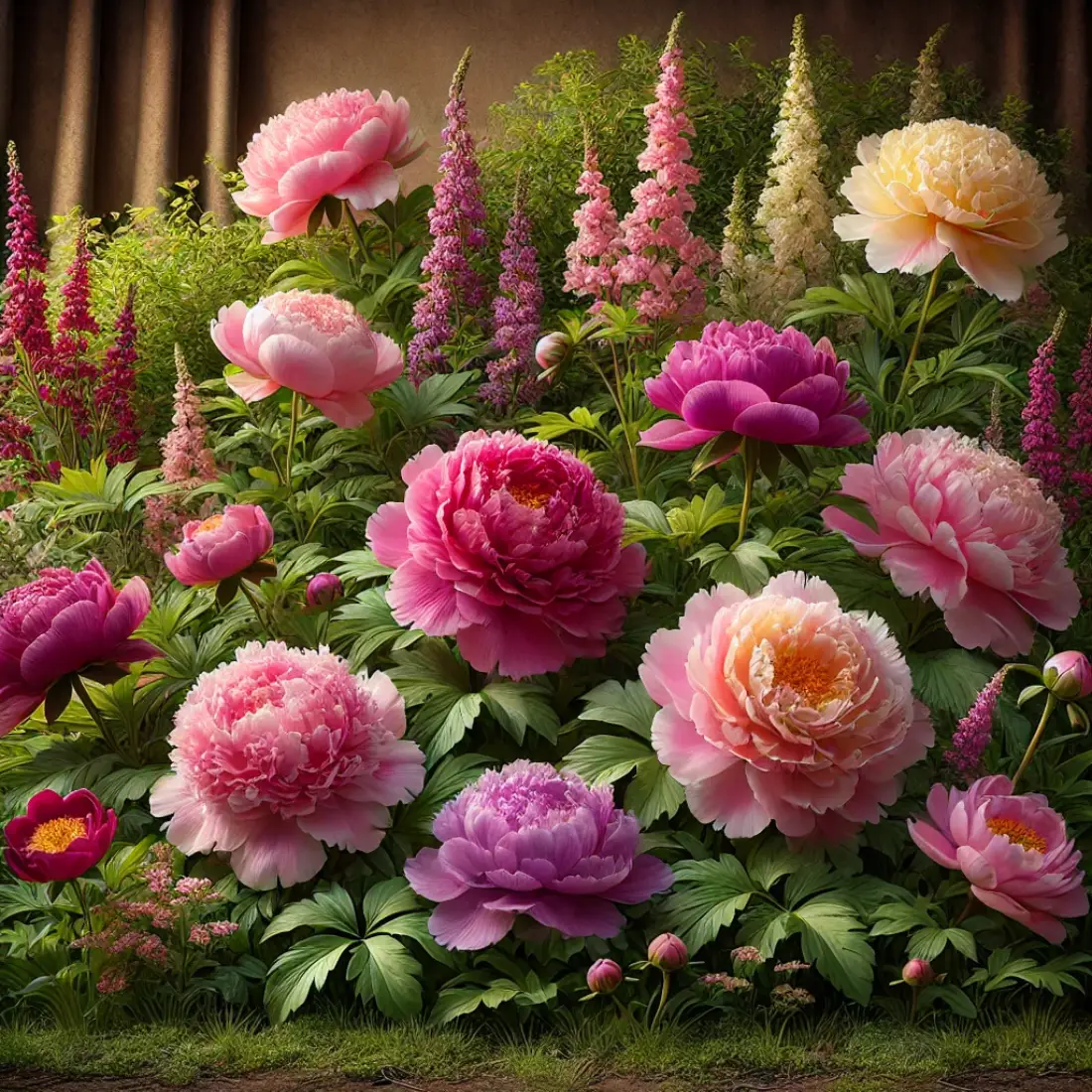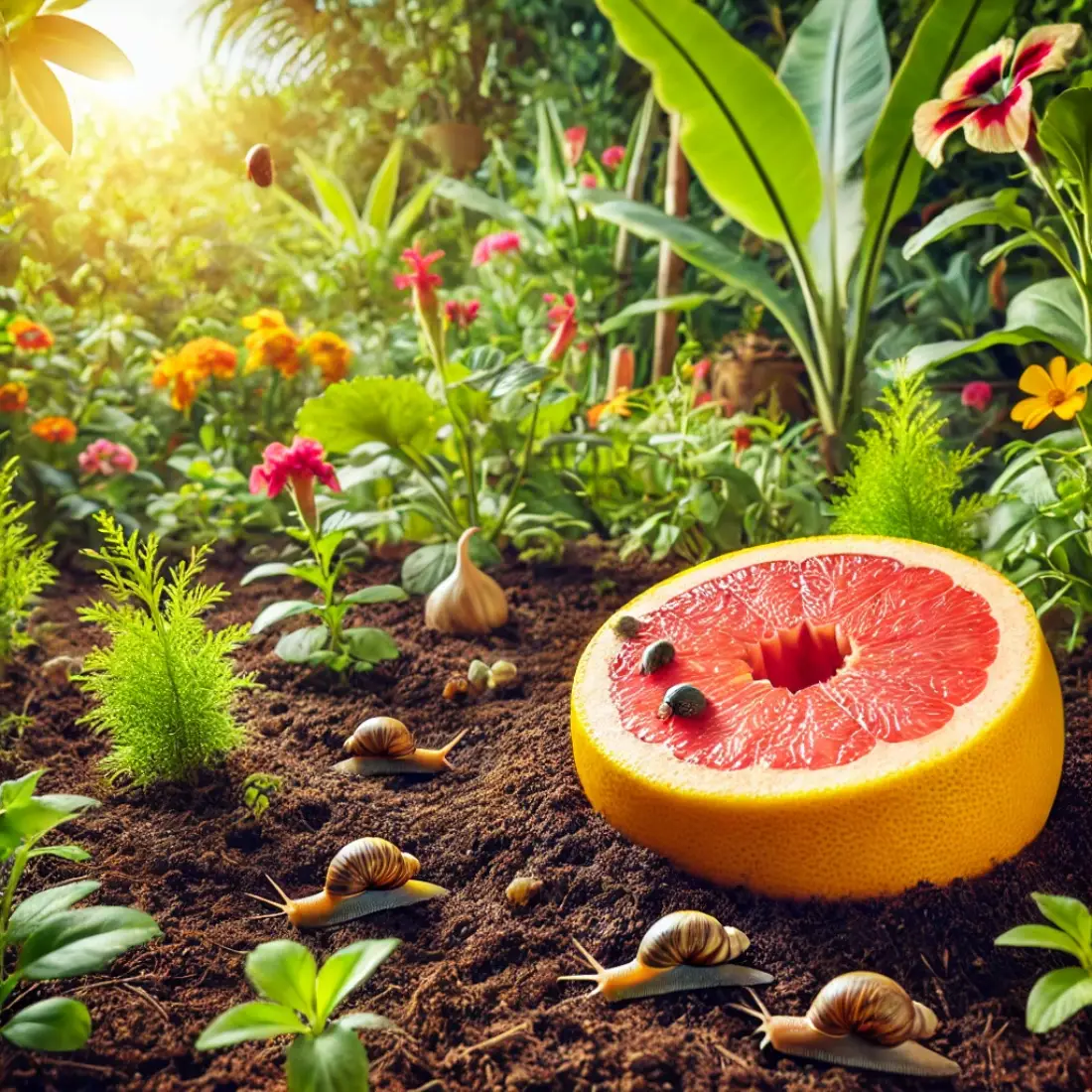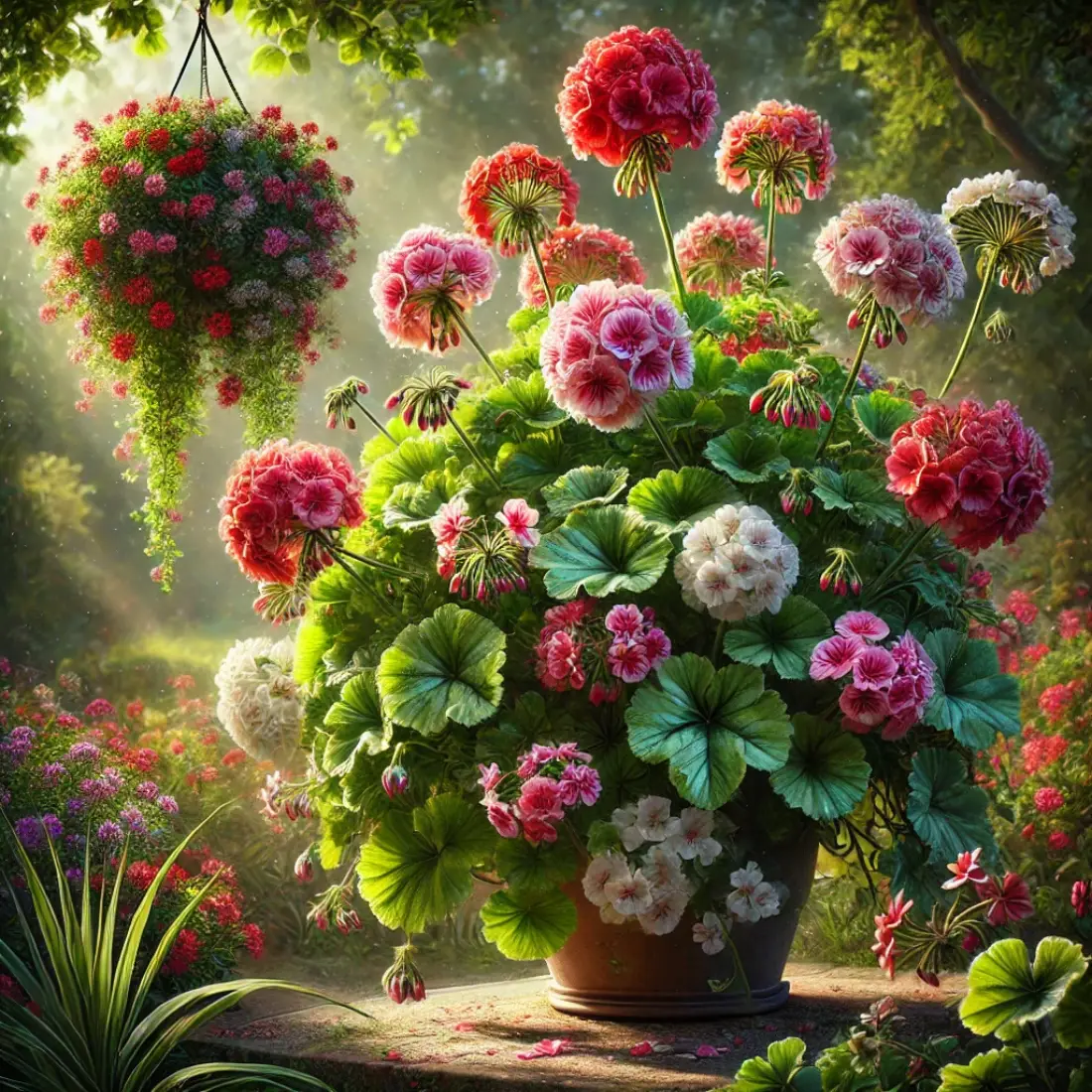Peonies are beloved perennial flowers known for their large, lush blooms and rich fragrance. These stunning plants, which can live for decades with proper care, are a favorite in gardens worldwide.
Peonies come in various types, including herbaceous, tree, and intersectional hybrids, each offering unique beauty. Growing peonies requires attention to soil, sunlight, and seasonal care, but the reward is a breathtaking display of flowers year after year.
- Peonies are long-lasting perennials that can thrive in the right conditions for decades, offering stunning blooms year after year.
- They require well-draining soil, full sun, and adequate space to grow healthily.
- Proper seasonal care is crucial, including fertilizing in spring, watering in summer, cutting back in fall, and protecting in winter.
- Pruning and deadheading help promote more blooms and keep the plant healthy.
- Be aware of common pests and diseases, and address issues like poor blooming and yellowing leaves promptly for the best results.
Types of Peonies

Peonies come in three main types, each with unique characteristics that make them popular among gardeners:
Herbaceous Peonies: These are the most common type, known for their lush, fragrant blooms. They die back to the ground each winter and regrow in the spring. Popular varieties include Sarah Bernhardt and Karl Rosenfield.
Tree Peonies: Unlike herbaceous peonies, tree peonies are woody shrubs that retain their structure year-round. They produce larger, more delicate flowers and bloom earlier in the season. Varieties like Shimadaijin are highly sought after.
Itoh Peonies (Intersectional): A hybrid between herbaceous and tree peonies, Itoh peonies offer the best of both worlds. They have sturdy stems, large blooms, and a longer flowering period. Varieties like Bartzella are prized for their vibrant colors.
Optimal Growing Conditions
Peonies thrive in full sun, needing at least 6 hours of sunlight daily for optimal blooming. They prefer well-draining, loamy soil with a slightly acidic to neutral pH (6.0-7.0). Good air circulation is essential to prevent fungal diseases, so space them about 3 feet apart.
When planting, ensure the roots are no more than 2 inches below the soil surface to encourage healthy growth. Peonies are hardy in USDA zones 3-8, where they can tolerate cold winters that help trigger blooming. With the right conditions, peonies will flourish, producing abundant flowers for many years.
Water Guidelines
Peonies need consistent moisture, especially during their growing season. Water deeply once a week, providing about 1 inch of water, to keep the soil evenly moist but not soggy. During dry spells or extreme heat, increase watering frequency, but avoid overwatering, which can lead to root rot.
It’s best to water at the base of the plant in the morning to reduce the risk of fungal diseases. In the fall, reduce watering as the plant goes dormant. Mulching around the base helps retain moisture and keeps the roots cool during hot weather.
Soil and Potting Requirements
Peonies thrive in well-draining, loamy soil rich in organic matter. The soil should have a slightly acidic to neutral pH, ideally between 6.0 and 7.0. If your soil is heavy clay or sandy, amend it with compost or peat moss to improve drainage and fertility.
For container planting, choose a large pot with drainage holes, and use a high-quality potting mix with added perlite or sand to enhance drainage. Ensure the peony roots are planted shallowly, with the eyes (buds) no more than 2 inches below the surface, to encourage healthy growth and abundant blooms.
Organic Fertilizers
Organic fertilizers are ideal for nourishing peonies, promoting healthy growth without the risk of chemical buildup. Compost and well-rotted manure are excellent choices, providing essential nutrients like nitrogen, phosphorus, and potassium. Apply compost around the base in early spring to enrich the soil.
Bone meal is another great option, offering a slow-release source of phosphorus, which supports strong root development and vibrant blooms. Fish emulsion can be used as a liquid feed during the growing season for an extra nutrient boost. Always avoid over-fertilizing, as peonies prefer a balanced, natural nutrient supply.
Pruning and Maintenance Tips
Pruning and maintenance are key to keeping peonies healthy and blooming. In early spring, remove any dead stems to make way for new growth. After flowering, deadhead spent blooms to encourage the plant to direct energy back to the roots. In late fall, cut back herbaceous peonies to about 2 inches above the soil to prevent disease.
For tree peonies, trim any damaged or crossing branches to maintain shape and airflow, but avoid heavy pruning. Apply a light layer of mulch in winter to protect roots, and always remove fallen leaves to reduce the risk of fungal infections.
Propagation of Peonies
Peonies are best propagated by division, typically in early fall. To divide, carefully dig up the mature plant and gently wash the roots to expose the eyes (buds). Use a sharp, sterile knife to cut the root clump into sections, ensuring each has at least 3-5 eyes and healthy roots.
Replant the divisions with the eyes no more than 2 inches below the soil surface, spacing them about 3 feet apart. Water thoroughly after planting. Though peonies are slow to establish, divisions will usually begin blooming within 2-3 years, rewarding your patience with beautiful flowers.
Common Problems and Solutions
Peonies, while generally hardy, can face several common problems:
Pests:
- Aphids: Small, sap-sucking insects that can cause distorted growth. Combat them with insecticidal soap or a strong water spray.
- Ants: Often found on peonies, but they aren’t harmful—they’re just attracted to the nectar. However, they can help spread other pests. Regularly check for and remove aphids to reduce ant presence.
Diseases:
- Botrytis Blight: A fungal disease causing blackened buds and stems. Prevent by ensuring good air circulation and removing infected plant parts. Apply a fungicide if necessary.
- Powdery Mildew: Appears as a white, powdery coating on leaves. This usually occurs in humid conditions. Improve air circulation and use neem oil or a fungicide to treat it.
Environmental Issues:
- Poor Blooming: Often caused by too much shade, improper planting depth, or lack of nutrients. Ensure peonies get full sun and are planted with their eyes just 2 inches below the soil.
- Yellowing Leaves: This can be a sign of overwatering, poor drainage, or nutrient deficiencies. Adjust watering practices and amend soil as needed.
FAQs about Peonies
How long do peonies take to bloom after planting?
Peonies typically take about 2 to 3 years to bloom after planting. While they establish their root system in the first year, blooming often begins in the second or third year as the plant matures.
Why aren’t my peonies blooming?
Common reasons for poor blooming include insufficient sunlight, planting too deeply, overcrowding, or lack of nutrients. Ensure peonies receive at least 6 hours of sunlight daily and that the eyes are planted no more than 2 inches below the soil surface.
Can peonies grow in containers?
Yes, peonies can grow in containers, but they require large pots with good drainage. Use a well-draining potting mix and ensure the container is deep enough to accommodate their extensive root system.
When is the best time to plant peonies?
The best time to plant peonies is in the fall, typically from September to early November. This allows the roots to establish before winter, leading to better growth in the spring.
How often should I fertilize peonies?
Peonies benefit from an annual feeding in early spring with a balanced fertilizer or compost. Avoid over-fertilizing, as too much nitrogen can lead to poor blooming and weak stems.
How do I prevent peony flowers from drooping?
Staking or using a peony support ring can help prevent flowers from drooping. Planting peonies in full sun and not over-fertilizing can also strengthen stems.
What should I do with peonies after they bloom?
After blooming, deadhead the spent flowers to prevent seed formation. In the fall, cut back herbaceous peonies to the ground to reduce disease risk and prepare for next year’s growth.
Can I divide and transplant peonies in spring?
While fall is the best time for dividing and transplanting peonies, it is possible in early spring before new growth begins. However, spring transplanting may delay blooming for a year.
How do I protect peonies from winter damage?
In colder climates, apply a light mulch over the roots after the ground freezes to protect peonies from winter damage. Avoid heavy mulching, which can trap moisture and cause rot.
Are peonies toxic to pets?
Peonies contain compounds that can be toxic if ingested by pets, particularly dogs and cats. Symptoms may include vomiting, drooling, and diarrhea. Keep pets away from peony plants and seek veterinary help if ingestion occurs.










